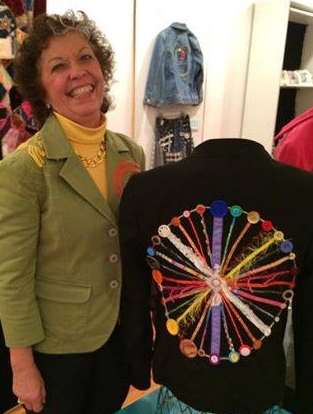 How to help your creative, sensitive or gifted kids weather emotional storms is a frequent dilemma for parents, grandparents and teachers of CASIGYs (Creative, Acutely Aware, Super-Sensitive, Intense, and/or Gifted You-s). Betty, mother of an eight year old gifted boy recently asked me “When my son comes home from school, I can tell he’s upset by something that happened. I ask him to tell me about it. When he does, he gets even more upset than he already was. I don’t want to make him so upset. But I don’t want to ignore his upset either. Do I wait for a better time? What do I do?”
How to help your creative, sensitive or gifted kids weather emotional storms is a frequent dilemma for parents, grandparents and teachers of CASIGYs (Creative, Acutely Aware, Super-Sensitive, Intense, and/or Gifted You-s). Betty, mother of an eight year old gifted boy recently asked me “When my son comes home from school, I can tell he’s upset by something that happened. I ask him to tell me about it. When he does, he gets even more upset than he already was. I don’t want to make him so upset. But I don’t want to ignore his upset either. Do I wait for a better time? What do I do?”
She’s not alone in her dilemma. We live in a world-wide modern culture in which we are taught to stifle our emotions. How then do we learn how to weather emotional storms, especially we who experience them so intensely? When we or our children have intense emotions, it can be like there’s a volcano erupting in our living room. And when we don’t or can’t express them, it can be like there’s an iceberg in the kitchen. Here’s what I told Betty.
Emotions are like Ocean Waves. This realization came to me one day, sitting in my counseling office with a client. I was searching for a better way to help him understand and cope with his emotions. I was struck with the many parallels between ocean waves and emotion waves. Let’s consider a few of them.
Ocean waves are a natural phenomenon. They’re made of energy ─ moving through the water of the ocean.  Emotions are a natural phenomenon too. Emotion is energy moving though our bodies. It’s instinctive to fight ocean waves. And most of us have been taught to fight our emotions. What works in dealing with ocean waves is to stop fighting them and allow them to flow through us. What works with emotions is to allow the waves of emotion to flow through us. Just like an ocean wave flows through or past us to shore and then back out to sea, an emotion can flow through us and out of us.
Emotions are a natural phenomenon too. Emotion is energy moving though our bodies. It’s instinctive to fight ocean waves. And most of us have been taught to fight our emotions. What works in dealing with ocean waves is to stop fighting them and allow them to flow through us. What works with emotions is to allow the waves of emotion to flow through us. Just like an ocean wave flows through or past us to shore and then back out to sea, an emotion can flow through us and out of us.
Ocean waves don’t ask anyone’s permission; they just show up. Emotions don’t ask anyone’s permission, they just show up. Both also respond to the weather, the moon and the earth’s movement. Ocean waves have high and low tides. Emotions have an ebb and flow also. Hospital Emergency Departments and Psych Hospitals fill us around the full moon. When there’s an earthquake under the ocean’s floor, Tsunami waves show up on the other side of the planet. When earth-shaking things happen in our lives, the reverberations show up all over our lives.
Our first instinct is often to resist or fight it when we’re in the ocean and a big or strong wave hits. Our first response to big or strong waves of emotion is often to also fight them. How does it work to fight an ocean wave? Not so well? True. It works equally poorly to fight our emotions. But that is what we have been trained to do, from the time when we’re babes in arms to being told to cry in our rooms and then “Don’t be sad.” “Don’t be mad” “Don’t feel bad.” The ‘best’ one of all is when we’re told we’re “too happy!” All of these are “Don’t feel” messages. No wonder we have such trouble with our body sensations and emotions!
 So how do you help your creative sensitive gifted kids weather emotional storms? What I shared with Betty was that we start allowing ourselves to feel our emotions, and we facilitate them. We ask ourselves and our kids “How am I/are you feeling right now?” And we team that up with what’s happening. For the ‘weather’ our lives are the events of our lives. That weather affects our emotions, just like weather affects ocean waves. So we tune in to our lives – What’s happening? How am I/are you feeling? We acknowledge this to ourselves. We talk about it together with those we care about.
So how do you help your creative sensitive gifted kids weather emotional storms? What I shared with Betty was that we start allowing ourselves to feel our emotions, and we facilitate them. We ask ourselves and our kids “How am I/are you feeling right now?” And we team that up with what’s happening. For the ‘weather’ our lives are the events of our lives. That weather affects our emotions, just like weather affects ocean waves. So we tune in to our lives – What’s happening? How am I/are you feeling? We acknowledge this to ourselves. We talk about it together with those we care about.
What if you ask your child how he’s feeling and he says “Nothing” but you’re seeing behavior that tells you otherwise? You guess. Something like – “I wonder if you’re feeling ___________” You fill in the blank. But wait, Not quite yet. The first time you say that, you put something silly or ridiculous out there, that you know isn’t accurate. You say something like, “I bet you’re happy that now that there’s twice as much homework as there was before.” This gives your kid something to stomp on, so to speak, and hopefully brings a little humor into the situation. It also gives them permission to engage with you and with their emotions. If they still don’t identify anything, NOW you can guess something that they might actually be feeling. They may not give you the satisfaction of a response. After all, they have to be ‘cool’ and they know it’s not cool to have emotions and it’s even less cool to express them.
How can you tell whether you’ve hit the nail on the head or if you’re out in Left Field? Watch and listen carefully. You may see a relaxation of muscle tension in their body. You may see a tiny flicker of a smile or a grin on the corner of her mouth. You may notice a problem behavior, the one the clued you in that something was awry, diminish or even disappear. If you don’t see any of those things, then come back to it another day from another angle until you do see a positive difference.
To make a lasting shift, don’t do this just once, and don’t do it only when things are in “Volcano Mode” or  Iceberg Mode” around your house. Develop a daily habit of talking about both
Iceberg Mode” around your house. Develop a daily habit of talking about both
- “What’s happening?” and
- “How are you feeling”
Share these things (in an edited, child-friendly version, of course) on a daily basis from your own life. And inquire into the lives of your friends, family members, spouse and children. And watch the emotional volcanoes, floods and icebergs gradually diminish.

